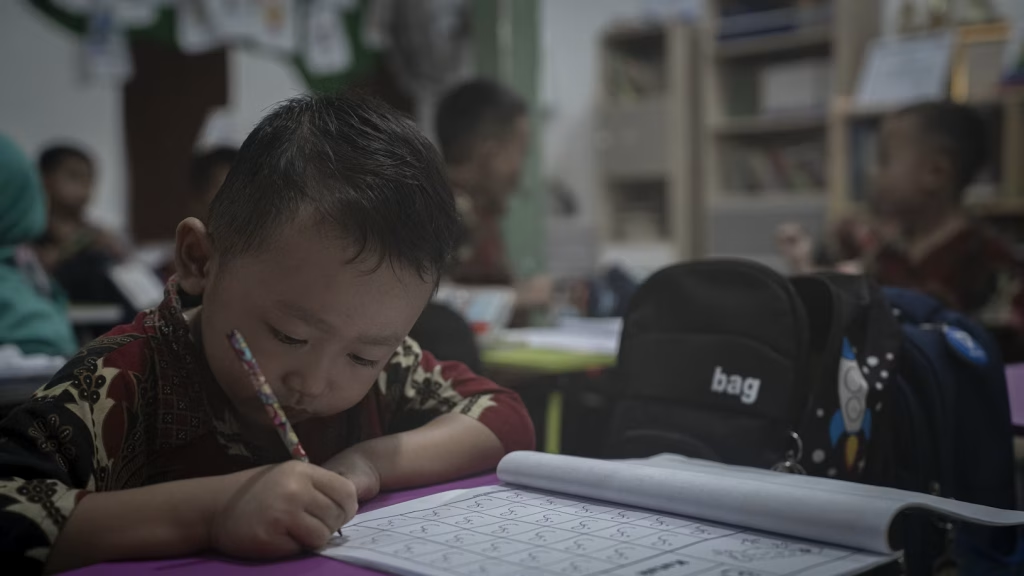
The preschool years are bursting with discoveries—tying shoes, sharing toys, asking a million “why’s.” Underneath those visible milestones, language is the real powerhouse, wiring a child’s brain for everything from emotional self-control to early math.
During the ages of three to five, neural connections fire at lightning speed; every conversation, story time, or grocery-aisle chat lays down pathways they’ll use for reading, problem-solving, and friendship.
A typical five-year-old recognizes roughly 10,000 words, yet a handful function like VIP passes: they open the doors to sequencing, emotional literacy, and social ease.
Below are 10 everyday words that children should understand by the age of 5—and why each one matters for confidence and connection.
Think of this list as the starter kit for confident communication. Mastery doesn’t require flashcards—just mindful, everyday talk from caregivers and teachers.
| Word | Why It Matters |
| Before | Teaches sequencing: “Wash hands before dinner.” Mastering order helps with routines and later reading comprehension. |
| Because | Connects cause and effect: “I’m sad because my tower fell.” Builds reasoning and empathy. |
| After | Introduces future thinking and delayed gratification: “After school we’ll visit the park.” |
| Happy | Foundational feeling word; naming emotions reduces meltdowns and boosts emotional intelligence. |
| Same | Early concept of equality and basic math (“same amount”); fosters fairness. |
| Different | Encourages curiosity about diversity—eye color, lunch choices, cultures. |
| Inside | Spatial cue vital for safety and independence (“Snacks are inside your bag”). |
| Stop | Boundary word that promotes impulse control—and can literally keep kids safe. |
| Wait | Builds patience and self‑regulation: “Wait for the light to turn green.” |
| Funny | Recognizing humor strengthens peer bonds and supports pre‑reading rhyming skills. |

How to Weave These Words Into Daily Life
- Narrate routines: “Before we go outside, coats on; after we play, shoes off.”
- Model feelings: “I feel happy because you shared.”
- Transform playtime: Sort blocks into “same” and “different” piles, hide treasures inside boxes, shout “stop” then “go.”
- Pause for practice: When you say “wait,” count slowly together to reinforce the pause, then cheer their success.
- Fuel laughter: Make up tongue twisters or silly rhymes—anything that tickles their “funny” bone reinforces the concept.
Remember, learning these words isn’t a quiz—it unfolds through everyday chatter, stories, and games. Each term strengthens a bridge to clearer communication, sturdier self-control, and richer relationships.
Quick Word Check and When to Seek Extra Support
Worried your child might be missing a few of these key terms? Try this simple, no-pressure check:
- Play “Show Me”: Hold up a favorite toy and say, “Hide it inside the box—then grab it after I count to three.”
- Feelings Flashcards: Show a happy face and ask, “What’s this feeling? When do you feel happy?”
- Story Sequencing: Ask your child to retell a short picture book. Listen for before, because, and after clues.
- Red Light/Green Light Remix: Add “stop,” “wait,” and “go” commands to see how quickly they connect words with actions.
If your preschooler regularly:
- Replaces these words with vague fillers (“thingy,” “that one”),
- Avoids cause-and-effect phrases (“because”) by age five,
- Struggles to follow simple sequencing directions
Consider a chat with their teacher or a pediatric speech-language pathologist. Early intervention can turn small gaps into big gains—giving your child the confidence to tackle kindergarten with a robust word bank and the social skills to match.
Join the Conversation
Which of these words sparked the biggest “aha!” moment for your child? Tell us in the comments—your tip could help another parent today.
Read More
- Here’s How to Send Your Children to Private School
- Your Child’s Manners Are Why No One Is Inviting You Over (You Can Change This)

Samantha Warren is a holistic marketing strategist with 8+ years of experience partnering with startups, Fortune 500 companies, and everything in between. With an entrepreneurial mindset, she excels at shaping brand narratives through data-driven, creative content. When she’s not working, Samantha loves to travel and draws inspiration from her trips to Thailand, Spain, Costa Rica, and beyond.
Leave a Reply